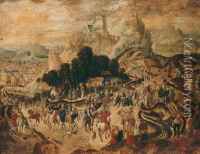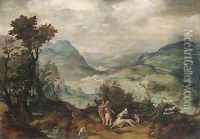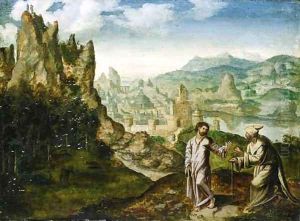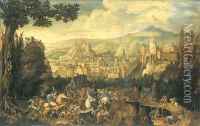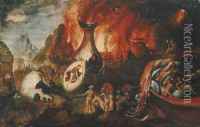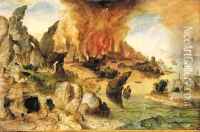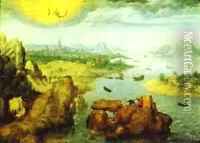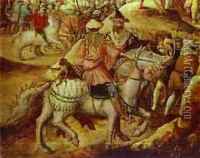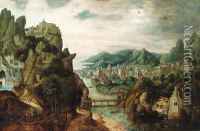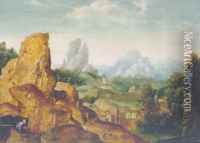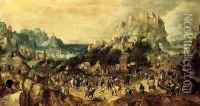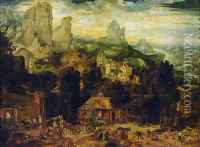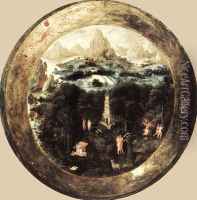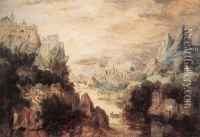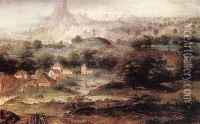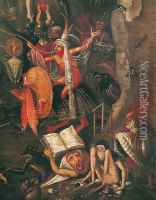Herri met de Bles Paintings
Herri met de Bles, also known as Henri Blès, was a Netherlandish Renaissance painter mainly active in the first half of the 16th century. He was born in Bouvignes or Dinant in present-day Belgium, around 1510. His actual name was Herri de Patinir, and he was likely related to Joachim Patinir, one of the pioneers of landscape painting. However, he became better known by his nickname 'met de Bles' (with the blaze), referring to the white tuft of hair he had, akin to a blaze on a horse’s forehead.
Bles is best known for his detailed landscapes, which often included religious or mythological scenes. His work is characterized by meticulous attention to detail, with intricate representations of trees, rocks, and water. He was one of the early artists to paint landscapes as the primary subject matter, rather than just as backgrounds for historical or religious narratives. His paintings also often featured a small owl, which became a signature element, and they usually conveyed a sense of the world's mystery and wonder.
Despite his contributions to the development of landscape painting, little is known about his training or early career. Bles likely traveled to Italy at some point, as Italian influences are evident in his work, particularly in the use of aerial perspective and the incorporation of classical ruins.
Bles's work was highly valued in his time, and he enjoyed the patronage of wealthy patrons. His paintings were sought after across Europe, and his influence was significant among the landscape painters of his time and the subsequent generations.
The exact date of Bles's death is not known, but it is believed that he stopped painting around 1550 and likely died between 1555 and 1560. His works can be found in various museums across the world, and they continue to be studied for their contributions to the Northern Renaissance and the evolution of landscape painting.
